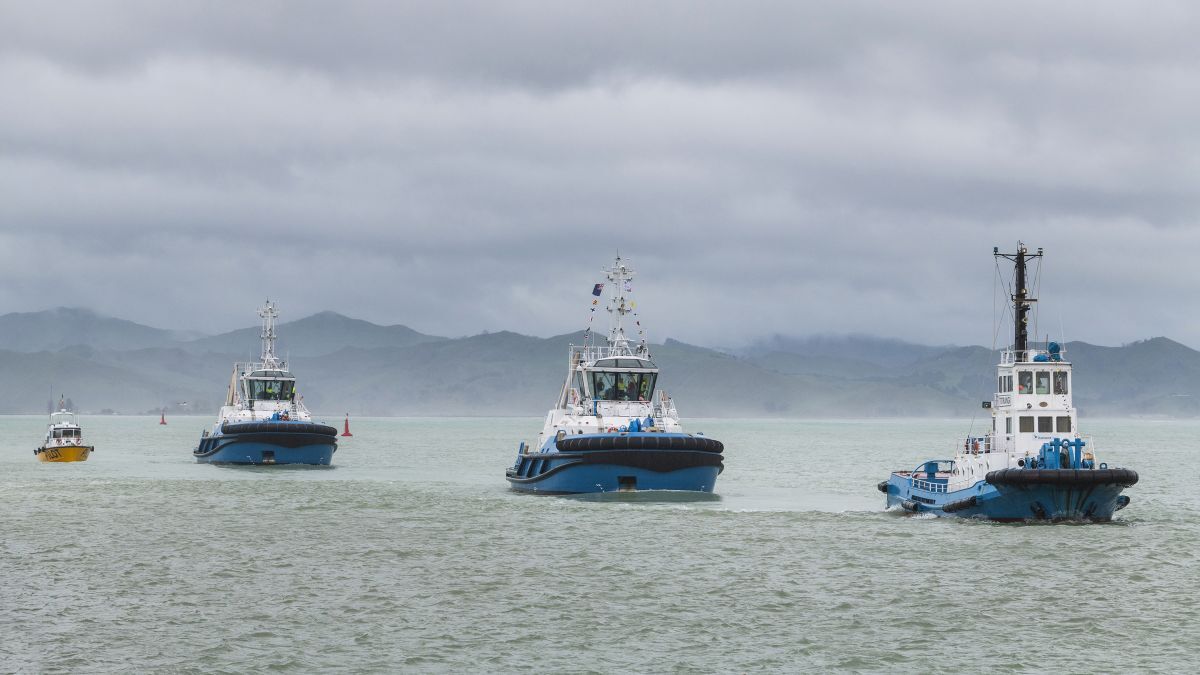 New tugs were delivered to a New Zealand port Q3 2022 (source: Redwise)
New tugs were delivered to a New Zealand port Q3 2022 (source: Redwise)
Shipyard slots are filling into mid-2023 and newbuilding prices are rising due to inflationary pressures
Despite supply chain delays and rising steel costs, shipyards continue to deliver newbuild tugs and receive high levels of orders. Demand for new tugboats remains strong, driven by port developments, fleet renewal and the need for powerful, green tugs.
According to BRL Shipping Consultants’ data, the global orderbook for tugs at the end of September 2022 was 335 vessels, down from 386 from the start of July, and lower than the 378 recorded at the end of September 2021.
This is indicative of the change in the number of tugs currently under construction worldwide, with deliveries outpacing new orders. BRL data does not include tugs under construction for shipyard’s own stocks or affiliate fleets.
By combining the BRL data with media reports, including those reported by International Tug & Salvage, 49 tugs were ordered Q3 2022, which is the highest quarter this year, with 39 tugs orderedQ2 2022.
Turkey gained the most tugboat orders and contributed to the dominance of European shipyards, which represented 45% of the total newbuilding contracts.
On the delivery side, 66 tugs were completed Q3 2022, up from 51 in Q2 2022, but similar to the number in Q3 2021. This is data collected from media reports, BRL and IT&S. Around 28% of the tugs delivered July-September 2022 are operating in the Americas and 26% in southeast Asia.
The tug market is still recovering from the global Covid-19 pandemic and is facing labour shortages, inflationary pressures and supply chain issues, plus owners are facing sustainability and environmental pressures.
According to Century Marine Services managing director Steve Dougal these issues, especially extended lead times for vital power and propulsion components, have resulted in a spiralling cost base with an appreciable backlog in newbuilding tug orders.
“Shipbuilders are now warning of significant delays in deliveries and substantial price increases on new orders,” says Mr Dougal. “Critical equipment such as main engines and generators have increased in price several times already this year and builders are expecting additional increases in the near future.”
As a result, he expects newbuilding tug prices to be around 20% higher in 2023. “It is more than possible that the trend of cost increases will continue moving up in tandem with the inflationary cycle in the foreseeable future,” says Mr Dougal.
A straight newbuilding order is estimated totake around 18 months to complete, from signing to delivery, depending on what main equipment has been ordered. Many tug builders construct vessels for their own stock or affiliated fleets, which means these tugboats are available with shorter delivery times.
“A steady stream of stock vessels can be advantageous for owners as it gives them that degree of flexibility of having potential new vessels obtainable at short notice,” says Mr Dougal.
Stock vessel availability is tight, as most building slots are taken into mid-2023 and any tugs built without assigned owners are swiftly snapped up.
“Without any new tug options to consider for prompt requirements, owners are obliged to charter in, shift vessels around or buy a secondhand tug for the interim,” says Mr Dougal.
“The used tug market is therefore very tight and modern boats are rarely available. But when one does appear on the market, interest is high, and it can usually be committed rapidly depending on the price.”
He says this rising demand has pushed up secondhand values by around 10% this year. “This direction is expected to continue, and I would not be surprised to see tug valuations strengthen another 5% before the year end,” says Mr Dougal.





